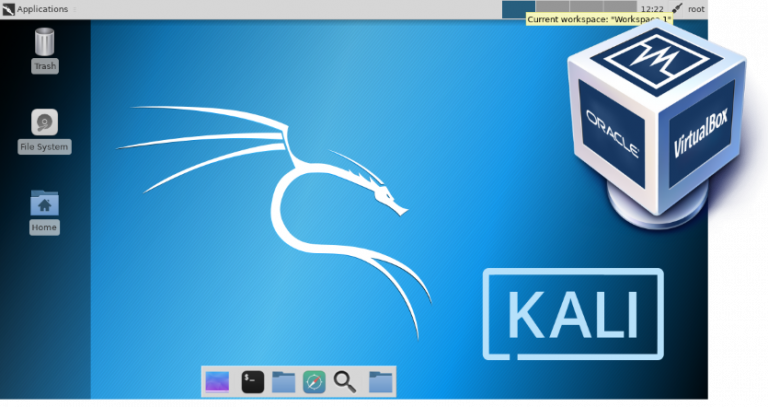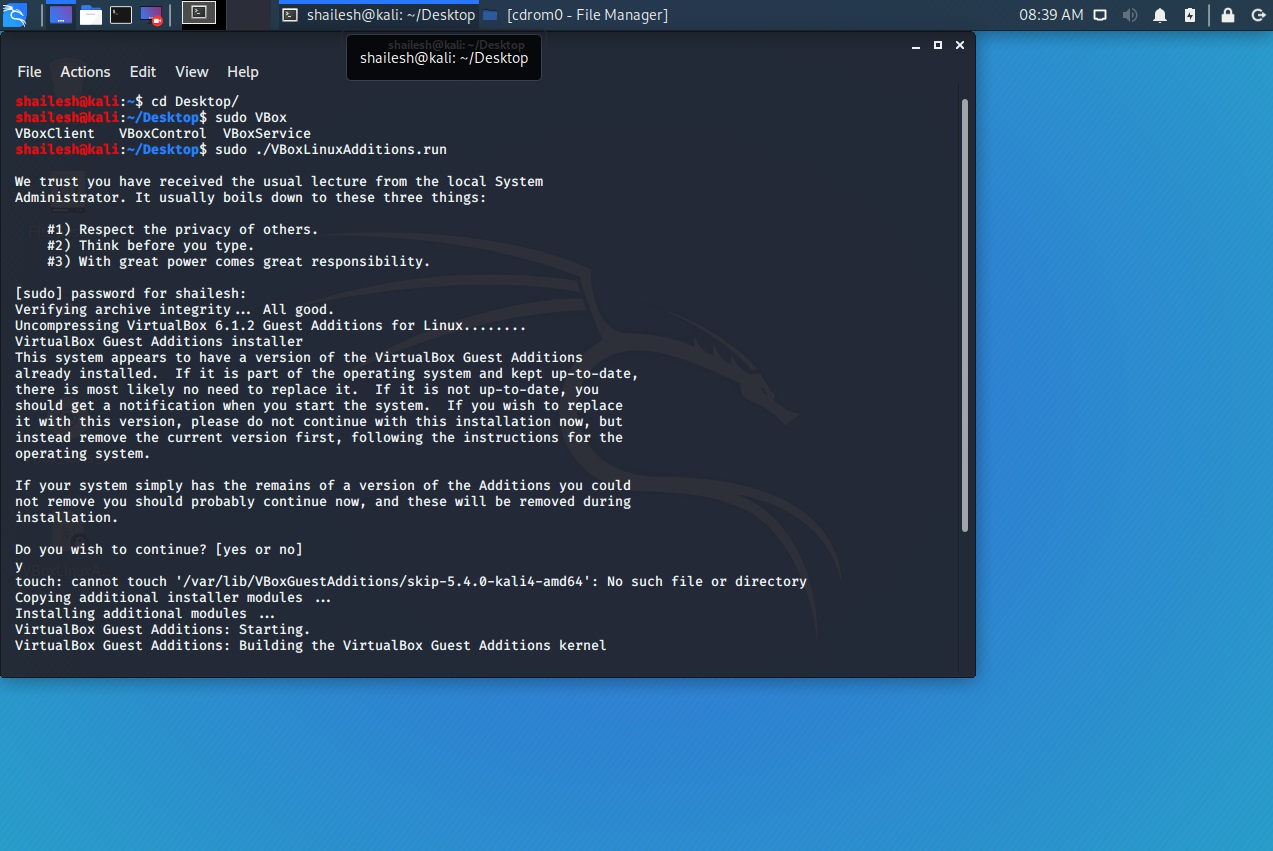

- #Kali linux virtualbox install how to
- #Kali linux virtualbox install install
- #Kali linux virtualbox install software
- #Kali linux virtualbox install password
Next enter a hostname for your Kali image, this should be something that identifies your VM on the network then click continue.Įnter a domain name, I am going with WORKGROUP as this is the default when you setup networking in windows, you can choose anything but make sure all your PCs are on the same domain and click continue.Įnter a password for the root user and again to verify and click continue.
#Kali linux virtualbox install install
The Core installation components will start to install Now select what type of keyboard you are using and click continue. Then select your location and click continue. Now move down to Storage and add the Kali Linux ISO that we just downloaded to the Controller:IDE by clicking the little picture of a CD and selecting choose virtual optical disk file then browsing to where you saved your Kali ISO, Once found click ok and we are ready to start installing Kali into our new VM.Ĭlick your newly created Virtual Machine, the Kali installer will run from the ISO we added to the virtual CD, then you should get presented with all the options above, use the arrow keys on your keyboard to select Graphical Install and hit enter. Once the settings is open go down to the networking tab and you want to set the Attached to setting to Bridged Adapter and click the advanced button and choose which network adapter you want to use and set promiscuous Mode to Allow All. So within VirtualBox manager right click your new VM and click settings. Next i just want to set the network and insert the iso into the virtual CD drive. Then click create and our virtual hard disk will be get created. Leave Storage on physical hard disk set to Dynamically allocated as this will keep your VM from taking up a load of disk space that is not needed.
#Kali linux virtualbox install software
I am choosing VDI as its the virtual box default, but you may want to select a different version like VHD if you wanted to use this virtual machine in some other virtualization software after its been installed. Firstly choose how large a disk you want to create, I normally choose between 30GB and 60GB then select what type of file the hard disk will be. Now we can create our Virtual Hard disk that kali is going to be installed on. Next set the memory to 2048 MB for now, if needed you can always change this at a later date, lastly make sure its checked on create a virtual hard disk now and click Create. Start of by adding a name for your Kali VM, changing the Type to linux and the version to Debian (64-bit). Once VirtualBox is open click New and you should be presented with a Create Virtual Machine window. So download the ISO, Open up virtual box and we can get started.
#Kali linux virtualbox install how to
Theirs a quick how to install VirtualBox in my Setup a Hacking Lab tutorial but otherwise i will assume this is already installed.

The version of Kali we are going to be installing now is Kali 2016.2 64bit GNOME 3 version which normally can be found at the top of there download page and ill be installing it into VirtualBox. There is a version of Kali for almost every type of computer, from raspberry pi to Chromebooks, they have a more light weight versions for older PCs or for customizing your own image, there is even pre-built virtual machine that you just load into VirtualBox or VMware.

Instead go for a Linux distribution like Ubuntu or Mint. The first thing to get straight is if your looking for a distribution to learn Linux or are looking for a general-purpose Linux desktop distribution, web design, gaming etc Kali should not be your first choice.

It was released on the 13th March 2013 as a complete top-to-bottom rebuild of BackTrack Linux, adhering completely to Debian development standards. Kali Linux is developed, funded and maintained by Offensive Security. Kali contains several hundred tools aimed at various information security tasks, such as Penetration Testing, Forensics and Reverse Engineering. Kali Linux is a Debian-based Linux distribution aimed at advance Penetration Testing and Security Auditing.


 0 kommentar(er)
0 kommentar(er)
